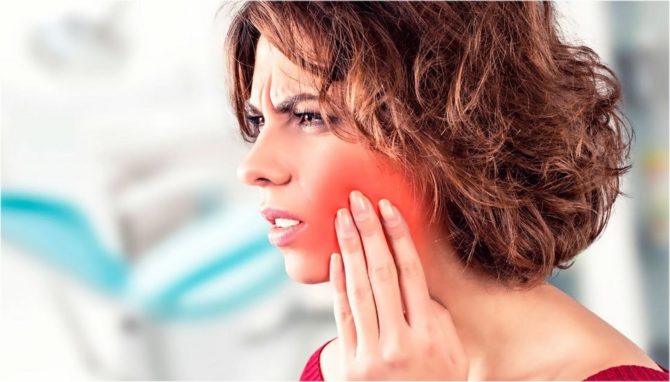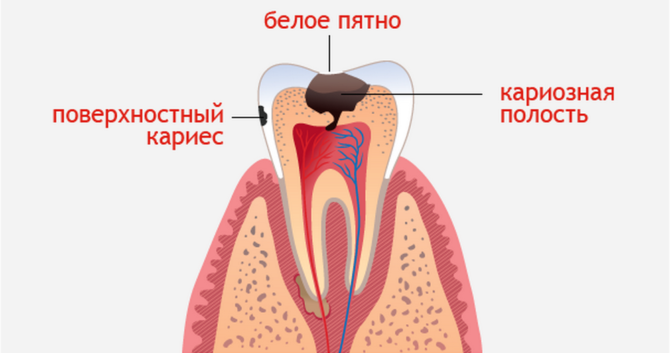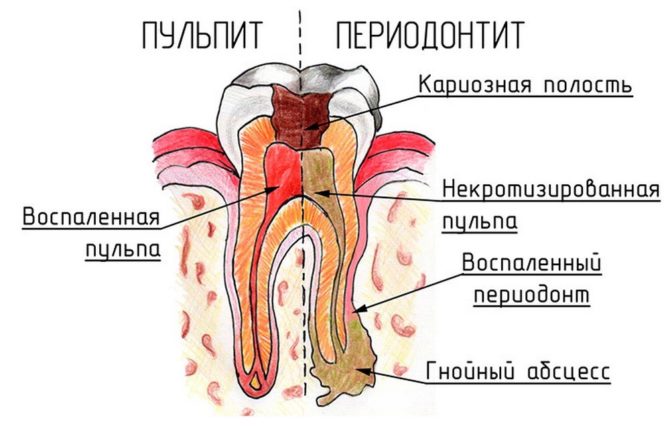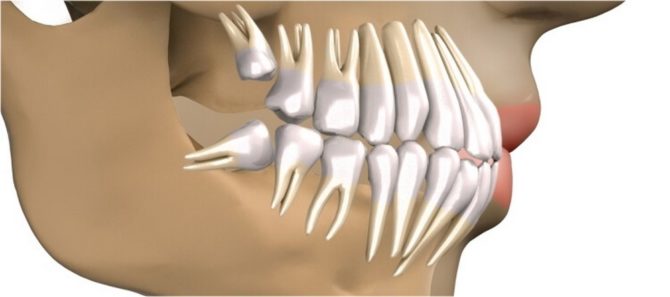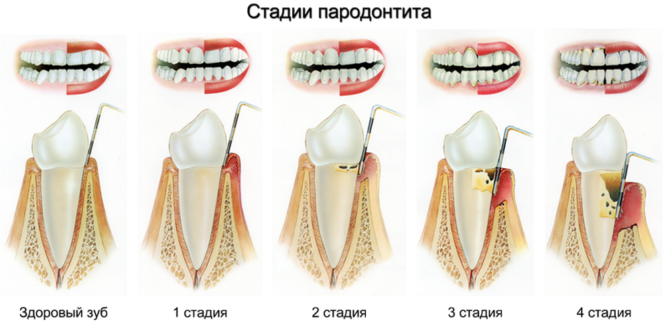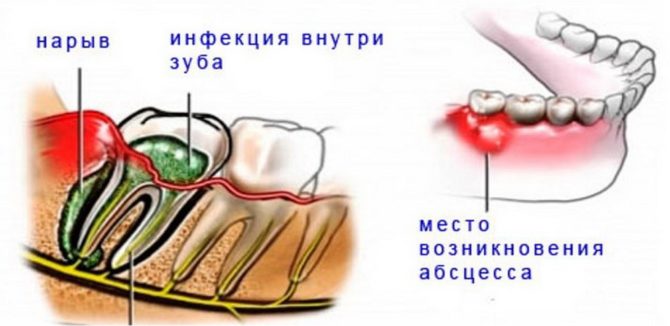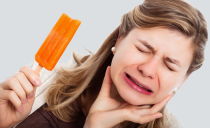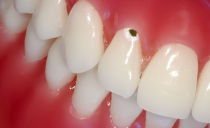What to do with a severe toothache and how to relieve it at home
Pain is an indicator of adverse changes in the body, many of which can be fatal. The stronger the intensity of the symptom, the more dangerous inaction. And this applies to toothache no less than to any other - her should be taken as a call for immediate treatment. Therefore, everyone should know what to do if a tooth or gum aches.
Content
- Reasons and appropriate therapy
- Why does a tooth ache under a filling?
- Molar aches and staggers: what to do
- Why a dead tooth ached sharply
- Which teeth must be removed
- How to relieve terrible toothache quickly
- How to rinse your mouth
- What to put on a tooth so that it does not hurt
- What pills help when a tooth hurts
- What to do so that the tooth never gets sick
Reasons and appropriate therapy
Toothache has a standard nature: when irritation of sensitive receptors occurs, an impulse is formed that is transmitted through nerve fibers to certain areas of the brain. The receptors that are responsible for the formation of a pain impulse are located in the pulp, dentinal tubules, and periodontium. They can be annoying for a variety of reasons.
Caries
Very often, the tooth hurts due to the destruction of enamel due to its demineralization. In the initial stages, the process is asymptomatic. Only occasionally may a slight nausea occur due to the increased sensitivity of the affected areas.
To prevent further tissue destruction, the disease must be treated. At an early stage, remineralizing therapy is sufficient, which is accompanied by the use of special solutions, films, toothpastes and other preparations containing phosphate, fluorine and calcium. To prevent unpleasant symptoms, you should abandon the use of irritating food: excessively sharp, sour, salty, cold or hot.
Severe tooth pains begin to torment a person from the moment when carious damage reaches the enamel-dentin border. The body responds to any irritants: cold, food, drinks. If you eliminate them, the discomfort will disappear immediately. However, for a full treatment, you will have to consult a dentist who will clean the carious cavity, rinse it with antiseptics and seal the hole. The procedure is carried out in just one visit.
Pulpitis
This is an inflammation of the neurovascular bundle located inside the tooth. Most often, the disease manifests itself due to untreated caries. Microbes and toxins penetrate the nerve and act on its tissues, causing their edema and progressive necrosis.
In simple words, the pulp gradually “swells” and is pressed strongly against the walls of the chamber. The nerve endings are compressed, resulting in acute pain in the tooth. At home, it can only be removed with the help of powerful painkillers.
To stop the infectious process that affects the tooth nerve and eliminate severe pain, doctors do the following:
- Anesthetize the painful area.
- Open the pulp chamber.
- Remove the nerve.
- Cleans the canals inside the root.
- They are washed and filled.
- Put the seal on the crown.
Periodontitis
The disease is a complication of pulpitis, gingivitis, periodontitis. Or develops as a result of poor-quality medical manipulations, because of bad habits, poor hygiene.
With periodontitis, tissues around the root become inflamed. The dead pulp or its remains are still in the channels.The purulent contents of the channel rush to the gums, which provokes acute toothache. So sharp and strong that it’s even impossible to touch the organ.
With periodontitis, emergency medical care is required. The dentist will open the canal and leave it open for a while so that the pus can go outside. The patient may be prescribed soda or salt rinses, thanks to which the microbes will cease to multiply, and the inflammation will pass.
Teething wisdom
When the latter erupts in a row of teeth under the gum hood, severe pain occurs, which often spreads to the cheek, jaw, throat and / or ear. Rinses and pills can help only for a short time, but the problem itself will not be eliminated. Therefore, you must go directly to the maxillofacial surgeon.
If the tooth grows correctly, the gum hood is excised to facilitate teething. However, very often wisdom teeth do not have enough space in the formed row, which causes various complications, accompanied by inflammatory processes.
The latter often lead to the development of phlegmon, sepsis, and even death. Therefore, it is not always necessary to cut the gum. The only way to prevent risks and protect a person from torment is to remove the problem tooth.
Why does a tooth ache under a filling?
The seal, which was put 6-7 years ago, could be sold. If the pulp is still alive, and the fit of the seal to the edges of the tooth is broken, it will be very sick under the influence of any stimulus.
An organ sealed in the canals usually does not bother. Pain can occur only in the following cases:
- If the tooth became ill some time after the dental procedure, the tightness of the old filling was broken, and the infection entered the already isolated canals.
- If instantly or almost immediately after the procedure - a medical error was made. For example, the canal is not completely filled, and the infection remained in it. Or an instrument broke off, which provoked inflammation in the root.
Whatever the cause of the pain under the seal, it cannot be treated at home. You should immediately consult a doctor, since this is a sure sign of the start of the pathological process.
Molar aches and staggers: what to do
Motility is explained in different ways, but the most common reason is the development of periodontitis. This is inflammation of the gums, in which the gingival attachment is disturbed.
With this pathology, professional help is required. But if the molar aches terribly, you can alleviate the condition with Kamistad, Kalgel, Holisal or Solcoseryl - gels that help relieve inflammation and anesthetize the gums.
Why a dead tooth ached sharply
A dead tooth is one whose pulp has either died or been removed. Many people believe that it cannot hurt, since the nerve is absent and does not fulfill its functions. But this is not entirely true: with periodontitis, the nerve actually dies, however, it remains in the pulp and decomposes. Gradually, the pus moves to the root, and the surrounding tissues become inflamed. Therefore, a very severe toothache occurs.
A dead tooth may become sensitive due to the development of complications during or after treatment of the canals. This happens for four reasons:
- Excessive removal of material for filling beyond the root.
- Skipping one or more channels.
- Poor channel processing.
- Allergy to filling material.
If a patient has a severe toothache immediately after canal treatment, he has developed post-filling syndrome, which should go away after a maximum of two weeks and usually subsides every day. If the nagging is too strong and does not tend to decrease, it is worthwhile to see a doctor again to eliminate the mistakes made earlier.
Which teeth must be removed
With caries and pulpitis, diseased teeth always remain. The situation is different with periodontitis.The acute forms of this disease are not difficult to cure, but the presence of cysts often serves as a reason for removal.
They also do this when there is difficulty in teething wisdom, since dissection on the gum hood cannot guarantee that the patient will not develop other pathologies. Among the possible: interweaving of the roots of eights with the roots of other molars, curve growth, repeated growth of the hood. Any defects can lead to the onset of a serious inflammatory process.
Removing a diseased tooth is often prescribed for such diseases:
- Osteomyelitis.
- Periostitis.
- Abscess.
- Phlegmon.
- Other pronounced purulent processes.
- Close proximity of inflamed roots and maxillary sinus.
How to relieve terrible toothache quickly
The first thing to do if you have a toothache is to rinse your mouth. In the interdental spaces and carious openings, food debris could be stuck, which provoked the development of an unpleasant symptom. To eliminate them, and at the same time to alleviate severe pain in the tooth, you can make a soda or saline solution.
You should refuse sweet, spicy, sour, cold and hot. You can’t lie: this will concentrate on discomfort and increase blood flow to the jaw, which will lead to even more severe irritation of nerve fibers. Putting hot salt on a bad tooth and using hot compresses is not worth it for the same reason.
How to rinse your mouth
Homemade solutions are an effective medicine against toothache. Traditional medicine offers a lot of recipes. Here are just a few of them:
- Two tablespoons of salt pour a glass of warm water and mix.
- Dissolve in a boiling water 2 tbsp. l baking soda and cool the resulting mixture to room temperature.
- Connect 2 tbsp. l pharmacy sage and 200 ml of boiling water. Insist for half an hour and strain.
 Pour 20 g of oak bark into a pan, pour 200 ml of water and boil the mixture for about 20 minutes. Strain and dilute with boiling water so that a whole glass of liquid is obtained.
Pour 20 g of oak bark into a pan, pour 200 ml of water and boil the mixture for about 20 minutes. Strain and dilute with boiling water so that a whole glass of liquid is obtained.- Boil three tablespoons of chamomile flowers in a small amount of water for two minutes. Remove the mixture from the stove and cool to room temperature. Before rinsing your mouth, add a little honey to the broth.
- Combine 2 tsp. propolis alcohol tincture and 200 ml. warm water, mix.
- Rinse your mouth with regular vodka. Alcohol cannot be swallowed, as it is incompatible with many drugs.
- Pour boiling water over 1 tbsp. l aspen shavings, boil for 2 minutes, insist another 40 and strain.
- Grind turnips. Take 2 tbsp. l the resulting slurry and immerse in boiling water. After half an hour, remove the mixture from the heat and strain.
When the tooth hurts slightly, you can make decoctions from ordinary tea. If only rinsing was carried out from the inside, and with a warm rather than hot means.
It is impossible to warm a sore spot outside! From the use of bottles of boiling water, heating pads and hot compresses can "inflate" the whole cheek. And then only maxillofacial surgeons can correct the situation.
What to put on a tooth so that it does not hurt
You can cope with toothache at home with the help of any products that have analgesic properties. Among those:
- Tea brewing. Soak in a boiling water a pinch of tea leaves or a tea bag and put on a bad tooth. In an hour or two, the discomfort will pass, and tannins, which the product is rich in, will contribute to this.
- Garlic. Grind a large clove and attach the resulting slurry to the diseased tooth. Secure with a piece of cotton. Thanks phytoncides, the vegetable copes well with inflammation and its manifestations. To enhance the effect, the mass can be salted.
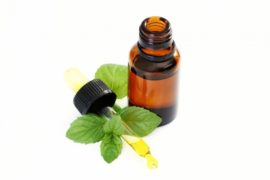 Mint. Rinse a couple of leaves and chew very carefully on the side where the tooth hurts. This is an excellent folk remedy for pain, since a medicinal plant reduces inflammation and normalizes blood circulation in the mucous membrane of the oral cavity.
Mint. Rinse a couple of leaves and chew very carefully on the side where the tooth hurts. This is an excellent folk remedy for pain, since a medicinal plant reduces inflammation and normalizes blood circulation in the mucous membrane of the oral cavity.- Black pepper.Moisten a piece of cotton and sprinkle it with a mixture of salt and ground pepper. Apply a compress to the sore spot, and in just an hour the tooth will stop whining.
- Potatoes. Wash, peel, grate, salt, and apply to the inflamed gum. The root crop relieves swelling and swelling, which reduces soreness.
- Cucumber. Rub a fresh vegetable and put the resulting slurry on a sore tooth. If desired, the mass can be salted.
- Bow. Finely chop and leave near the inflamed gum. The vegetable is rich in volatile, which have an antimicrobial effect.
- Essential oils. Put a little clove, fir, sage or peppermint oil on a tampon and apply to the affected area. If the tooth hurts very badly, you can make such compresses and put them directly into the hole.
Funny recipe! Try warming your feet in hot water. Manipulation will increase blood circulation in the body, which will speed up the metabolism and will contribute to the faster elimination of toxins from the pulp. Sometimes this household method really gives the desired effect.
What pills help when a tooth hurts
A tooth can hurt suddenly and at the most unexpected moment: during a romantic evening, at night, at work or on the way to the resort. Not always at hand there are products from which you can cook a good folk remedy. Therefore, it would be nice to have a powerful analgesic with you.
The list of pain medications that help when a tooth hurts:
- Nise. The active substance is nimesulide. The medicine is able to relieve inflammation, swelling and swelling of the gums. It quickly copes with even the most severe cramps: the pain disappears within 10 minutes after taking one tablet. The maximum daily dose is 200 mg. The medication is contraindicated in pregnant women and children. It can cause side effects such as nausea, vomiting, abdominal pain, blurred consciousness, and a rash.
- Paracetamol. A very powerful tool, after which not only the toothache passes, but also the body temperature decreases, often increasing against the background of inflammatory processes. The drug is harmful to the kidneys, so it should be taken in minimal dosages. An adult should not drink more than two grams of paracetamol per day.
- Analgin. The active substance is metamizole sodium. The medicine can only help with mild or moderate pain. Not suitable for long-term use and is prohibited in many developed countries due to the strongest depressing effect on the eyes and heart.
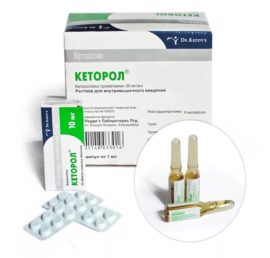 Ketorol. The best cure for sharp pain. It will surely cope with the symptom. And all thanks to ketorolac - a substance that has a pronounced systemic effect. On its basis, other drugs for pain relief are also produced, for example, Ketorol, Kredofarm, Ketanov and Ketonort. Ketorolac provokes side effects after almost every dose, so it cannot be taken more than two times. Then you should switch to a gentle symptomatic treatment.
Ketorol. The best cure for sharp pain. It will surely cope with the symptom. And all thanks to ketorolac - a substance that has a pronounced systemic effect. On its basis, other drugs for pain relief are also produced, for example, Ketorol, Kredofarm, Ketanov and Ketonort. Ketorolac provokes side effects after almost every dose, so it cannot be taken more than two times. Then you should switch to a gentle symptomatic treatment.- Ultracain. If there is a cavity in the tooth, you can put cotton wool moistened in the preparation into it. An intramuscular injection should be done by a doctor, even if the toothache is very severe and circumstances allow you to do it yourself.
After taking the medicine, only pain passes, the cause of its occurrence remains. Therefore, sooner or later everyone has to see a doctor. And it’s better to do it faster - you can still save the tooth.
What to do so that the tooth never gets sick
It’s easy to preserve dental health so that you never suffer from the destruction associated with their destruction. Only three “NOT” rules must be observed:
- Do not abuse sweets and irritating enamel food.
- Do not forget to brush your teeth at least twice a day: in the evening and in the morning.
- Do not ignore the dental floss needed to remove food debris from the interdental space.
And do not forget to visit the dentist at least once a year.Timely discovered caries can be healed much easier and more painlessly than pulpitis or, even worse, phlegmon.

